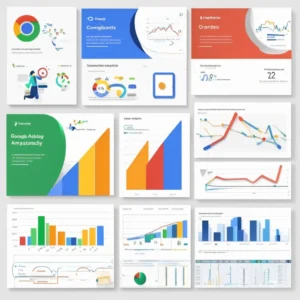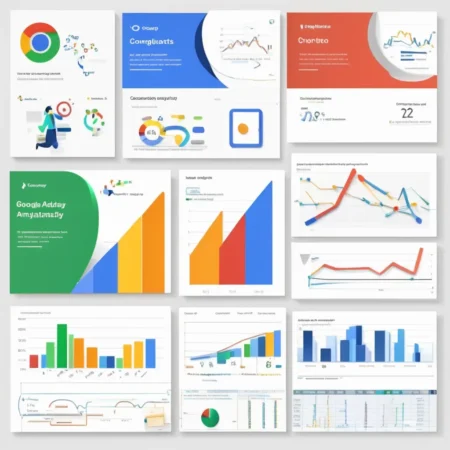Table of Contents
Google Ads is a key tool for businesses to make money and bring more visitors to their sites. If malware or unwanted software infects your site, Google Ads could disapprove them and suspend your account.
We will discuss Google Ads appearing on hacked websites. We will explain what malicious software is. We will also explore why ads may be rejected. We’ll also cover how to fix and avoid these problems.
Knowing Google’s rules and acting early can keep your site safe and your Google Ads campaign running well. This is key for businesses wanting to use Google Ads fully while keeping their online presence safe and up to code.
Key Takeaways
- Google Ads may suspend accounts if they discover policy violations. Google may ban advertisers who violate policies from advertising on the platform in the future.
- We will issue a warning at least 7 days before suspending an account for policy violations.
- Breaking Google Ads rules will lead to instant suspension because of serious violations.
- Users need to go through a 4-step process to fix ads disapproved because of compromised sites. They should first verify the issue, then review it, appeal the decision, and finally check their website’s status.
- Advertisers must clearly describe the product they are advertising. They should also explain any consequences of installing software. This is necessary to avoid policy violations.
Understanding Google’s Malicious Software Policy
Google strongly opposes malicious software. They define it as any program that aims to harm or get unauthorized access to computers, devices, or networks. This includes viruses, ransomware, worms, and many other harmful programs.
What Constitutes Malicious Software?
Google’s policy on malicious software is straightforward. They see any software that tries to harm or get unauthorized access as a violation. This covers malware in downloads, scripts on websites, and some WordPress plugins.
Consequences of Violating the Policy
Google is extremely strict about malicious software. If your ads or website breaks this rule, they will suspend your Google Ads account quickly. They use automated systems to find and flag malicious content.
Getting your account back can take a while. First, put your site in maintenance mode and backup files. Then, scan for malware thoroughly.
Policy Violation Consequences: – Suspended account for malicious software – 7-day warning for unwanted software – Automated warning for unintentional policy violations like ad disapproval.
Google wants a safe and trustworthy ad space. They stress the need for transparency, good user experience, and strong security. Advertisers must keep their ads and websites safe from malware. If not, they could lose their account and ad privileges.
Identifying Compromised Sites and Unwanted Software
Website security is crucial. A “compromised site” is when someone changes a website’s code without the owner knowing. This can lead to scripts that send user data without permission, or install malware on devices. It can also cause pop-up ads or redirect users to other sites.
Google has rules for unwanted software. This includes software that is hard to use, deceives users or takes their data without permission. Examples are software that doesn’t tell you what it does, bundles extra programs without asking, or changes your system in ways you don’t want.
Signs of a Compromised Website
- Unexpected pop-ups or ads that don’t match the website’s content
- Unusual redirects to other websites, especially those that appear suspicious
- Unfamiliar scripts or code running in the background
- Degraded website performance or unexpected system changes
Characteristics of Unwanted Software
- Deceptive or misleading installation process
- Difficulty in uninstalling or removing the software
- Collecting and transmitting user data without permission
- Altering browser settings or system configurations without consent
Google ads compromised site error
As a digital marketer, knowing why Google might not approve your ads is key. Google has strict rules to keep users safe from harmful content. They don’t tolerate any violations.
One big reason ads get disapproved is that harmful software is present on your site. This includes things like malicious redirects, automatic downloads, or asking for personal info. Google says no to these because they can hurt the user’s experience and safety.
Google also doesn’t like ads that download extra software without asking first. Changing the user’s browser or system without their okay is also a no-go.
- Malicious redirects
- Auto-downloads
- Requests for sensitive user information
- Bundled software downloads without consent
- Unauthorized changes to the user’s browser, permissions, or system
Ads that lie about what they do can also get disapproved. For instance, an ad that looks like a website but downloads software won’t pass Google’s check.
To keep your ads okay and your account safe, watch your site for any bad stuff. Make sure you follow Google’s rules to avoid ad disapproval. This way, you can keep your digital ads working well.
Resolving Malware and Unwanted Software Issues
If your Google Ads got disapproved because of malware on your site, act fast. About 99% of sites use Google Ads to make money and get visitors. So, any issue with your ads can severely hurt your business.
Steps to Clean and Harden Your Website
Start by scanning your site for malware or unwanted software. This includes things like adware, spyware, and trojans. Tools like Wordfence or Sucuri can spot and remove these dangers.
After removing the bad stuff, make your site more secure. Update your system, plugins, and themes. Also, set up a firewall, use strong passwords, and limit who can get into your site.
Also, make sure to check the Google Search Console to see if your site is blocklisted. Then, reach out to Google Ads Support for more help and to appeal once you’ve fixed the problem.
“By taking steps to clean and strengthen your website, you can fix issues with harmful software and get your Google Ads working well again.”
Google Ads policy says you must get consent before changing browser settings or operating systems. Following these rules and fixing security issues quickly can help you get your ads approved again. This way, you can keep making money with Google Ads.
Conclusion
The Google Ads compromised site error poses a significant problem that could result in the shutdown of your Google Ads account if not resolved. Knowing Google’s rules on harmful software is important. Also, spot signs of a hacked website and fix it to keep your Google Ads running smoothly.
Keeping your website safe and trustworthy is key to following Google’s rules and safeguarding your online presence. Make sure to check your website for malware often, update your software, and fix any weak spots. This helps you dodge the “Malicious or unwanted software” error and keeps your Google Ads account safe.
Google Ads focuses on making a safe space for users, aiming to build trust in the ad network. By keeping your website secure and working well, you fix the Google Ads compromised site error. This also boosts the success and impact of your ads.
FAQ
What constitutes malicious software according to Google?
Google defines “malware” as software that aims to harm or gain unauthorized access to computers, devices, or networks. This includes viruses, ransomware, worms, and other harmful programs or apps.
What are the consequences of violating Google’s malicious software policy?
Google is strict about this policy. If your ads or website breaks the rules, they will suspend your Google Ads account right away, without warning.
What is a “compromised site” according to Google?
A “compromised site” occurs when a website’s code is altered to assist a third party without the owner’s knowledge. This can harm the site’s users.
What does Google consider as “unwanted software” under its policies?
Google’s policy on unwanted software includes software that is deceptive, hard to remove, or shares private information without permission.
Why might Google disapprove my ads and suspend my account?
Google might not approve your ads or suspend your account if they find malicious code on your site. This includes things like malicious redirects or requests for sensitive info without permission. They also don’t like ads that download the software without asking or change the user’s browser settings without okaying it.
How can I resolve malware and unwanted software issues on my website?
First, look for any recent changes that might have caused the ads disapproval. Then, scan your site for malware and fix any infected files. You can use plugins or professional services to find and remove malware.
After cleaning up, make sure to harden your website to prevent more malware. Check Google Search Console to determine if your site is blocklisted. If so, contact Google Ads support and appeal once you’ve fixed the problem.








